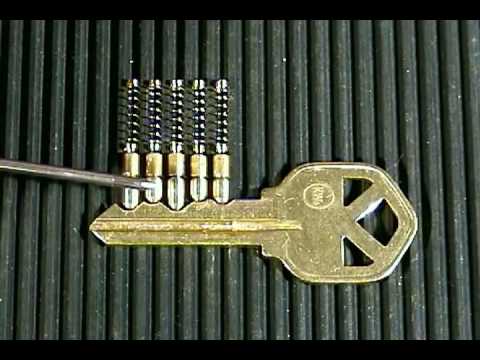
Lock Picking
Discover the secrets of padlock and cylinder lock picking with our expertly crafted guide. Enhance your security knowledge and learn how to bypass any lock with a pick. Unlock the mysteries of the lock world with our comprehensive step-by-step instructions and techniques.
Master the delicate art of lock picking and gain the ability to unlock any padlock or cylinder lock. Impress your friends and family with your newfound skills and become a true lock expert.
What is Lock Picking?
Lock picking is the skill of manipulating a lock’s components in order to unlock it without using the original key. It is a technique that has been used for centuries, and it involves using various tools and techniques to bypass the security of a lock.
Locks are commonly found on doors, gates, safes, and other items that require security. The most common type of lock is the padlock, which consists of a U-shaped metal shackle that fits into a metal or plastic body. The shackle is secured by a cylindrical lock mechanism that can be operated with a key.
Lock picking involves understanding the inner workings of a lock, including the pins or tumblers that prevent the lock from turning without the correct key. The goal of lock picking is to manipulate these pins or tumblers so that they align properly and allow the lock cylinder to turn freely.
Lock pickers use specialized tools, such as picks and tension wrenches, to manipulate the pins or tumblers. Picks are thin and pointed tools that are used to lift each pin or tumbler to the correct height. Tension wrenches are used to apply rotational pressure to the lock cylinder, allowing it to turn once the pins or tumblers are in the correct position.
Lock picking requires a combination of skill, knowledge, and patience. It is often regarded as a specialized skill that is used by locksmiths, law enforcement, and security professionals. However, it can also be practiced as a hobby or for recreational purposes, as it offers a unique challenge and opportunity to understand the inner workings of locks.
While lock picking can be seen as a tool for bypassing security, it is important to note that it can also be used for legal and ethical purposes, such as during emergency situations or when authorized personnel need to gain access to locked areas. However, it is illegal to possess lock picking tools or use lock picking techniques without proper authorization.
In conclusion, lock picking is the art and skill of manipulating locks to bypass their security and unlock them without using the original key. It requires an understanding of lock mechanisms, the use of specialized tools, and a combination of technique and practice. Whether used professionally or as a hobby, lock picking offers a fascinating insight into the world of security and the mechanisms that keep our belongings safe.
Importance of Lock Picking
Lock picking is a crucial skill in today’s world where security is of utmost importance. Understanding how locks work and being able to pick them can have numerous practical applications.
One of the main reasons to learn lock picking is for emergency situations. Imagine being locked out of your own house or car with no spare key in sight. With lock picking skills, you can bypass the padlock or cylinder lock and quickly gain access, saving time and frustration.
Lock picking is not only useful in emergencies but also in the field of security. By understanding how locks function and being able to pick them, you can test the vulnerability of various locking mechanisms. This knowledge allows you to identify and address potential security weaknesses, helping to improve the overall security of homes, businesses, and other important establishments.
Additionally, learning lock picking can provide insight into the important role that locks and keys play in our daily lives. It helps us appreciate the craftsmanship and engineering behind these essential tools, as well as the significance of keeping them secure.
Mastering the skill of lock picking requires patience, dexterity, and a keen eye for detail. It is an art that combines both technique and intuition. With practice, you can become proficient in unlocking a wide variety of locks, showcasing your expertise and impressing others.
In conclusion, lock picking is not just about being able to unlock doors without a key. It is about understanding the mechanics of locks, enhancing security measures, and appreciating the craftsmanship behind them. Don’t miss out on the opportunity to master this invaluable skill with “The Art of Lock Picking: Mastering the Skill”.
Benefits of Learning Lock Picking
Learning the art of lock picking offers a range of benefits that go beyond simply being able to unlock a door. It is a valuable skill that can provide numerous advantages in both practical and professional aspects of life. Here are some of the key benefits:
- Improved Security: Understanding the workings of locks and cylinders allows you to better evaluate the security of your surroundings. By identifying vulnerabilities, you can take appropriate measures to enhance the safety of your home or workplace.
- Problem-Solving Skills: Lock picking involves analyzing and manipulating complex mechanisms. It enhances your critical thinking and problem-solving abilities as you navigate through different lock systems to find the right solution.
- Emergency Situations: Accidentally locking yourself out can be a stressful situation. By learning lock picking, you gain the ability to bypass locks and regain access to your property quickly and efficiently, without having to rely on expensive locksmith services.
- Understanding Inner Workings: Mastering lock picking enables you to gain an in-depth understanding of the mechanisms behind locks and keys. This knowledge can be applied to other areas of life, such as car maintenance or home security system troubleshooting.
- Career Advancement: The art of lock picking is highly valued in certain professions, such as locksmithing, law enforcement, and private investigations. By acquiring this skill, you can open up new career opportunities and increase your marketability in these fields.
Learning lock picking is a fascinating endeavor that goes beyond the realm of mere practicality. It nurtures curiosity, hones problem-solving skills, and provides a sense of accomplishment as you master the intricacies of locks and the art of picking them.
Different Types of Locks
When it comes to the world of locks, there are many different types to consider. Each type offers its own unique level of security and mechanisms for unlocking.
One common type of lock is the padlock. Padlocks are portable locks that can be easily attached to gates, doors, or containers. They typically consist of a metal body, a shackle, and a key or combination mechanism to unlock them. Padlocks are commonly used for securing storage units, lockers, or bicycles.
Another type of lock is the cylinder lock. Cylinder locks are widely used in residential and commercial properties. They feature a cylinder mechanism that can be unlocked using a key or by manipulating the lock pins with lock-picking tools. Cylinder locks provide a good level of security and are commonly found on front doors or office doors.
One interesting type of lock is the combination lock. Combination locks rely on a sequence of numbers or symbols to unlock them. They offer a certain level of security, as they require the correct combination to be entered. Combination locks are commonly used for securing lockers, safes, or gates.
There are also more advanced lock types, such as electronic or biometric locks. These locks use electronic or fingerprint recognition systems to unlock them, providing high levels of security and convenience. They are often used in high-security areas or for controlling access to certain spaces.
Whether you need to unlock a padlock, pick a cylinder lock, or bypass a combination lock, “The Art of Lock Picking: Mastering the Skill” will teach you the techniques and skills needed to conquer any lock. With this comprehensive guide, you’ll become a master locksmith and gain the confidence to tackle any locking mechanism.
Tools for Lock Picking
Mastering the skill of lock picking requires the right tools. Whether you need to bypass or unlock a padlock, the following tools will help you on your journey:
- Lock Pick Set: This set contains a variety of picks and tension wrenches, allowing you to manipulate different types of locks. The picks are designed to fit inside the lock cylinder and manipulate the pins, while the tension wrench applies pressure to the plug to keep it in place when picking.
- Tension Wrench: This tool is essential for applying rotational pressure to the lock’s plug. It comes in various sizes and shapes to accommodate different lock types.
- Hook Pick: This pick has a curved, hook-like end that is ideal for lifting individual pins within the lock cylinder. It allows for precise manipulation and control during the picking process.
- Rake Pick: The rake pick is designed to quickly and efficiently manipulate multiple pins at once. With its serrated edge, it can swiftly move the pins up and down, simulating the action of a key.
- Diamond Pick: The diamond-shaped tip of this pick is versatile and can be used for single-pin picking or raking. Its angled tip provides excellent feedback and control.
- Key Extractor: In case you accidentally break a key inside a lock, a key extractor tool will help you remove it without damaging the lock.
With these tools at your disposal, you’ll be able to master the art of lock picking and open a world of possibilities.
Basic Lock Picking Techniques
When it comes to mastering the skill of lock picking, understanding the basic techniques is essential. Whether you’re dealing with a cylinder lock or a padlock, these techniques will help you bypass security and unlock the door.
- Single Pin Picking: This technique involves manipulating each pin inside the lock cylinder individually until they are all aligned at the sheer line, allowing the lock to be turned and unlocked.
- Raking: Raking involves quickly and repeatedly inserting a specially designed lock pick (also known as a rake) into the lock and rapidly moving it up and down. This motion causes the pins to bounce and eventually align at the sheer line, unlocking the lock.
- Key Bumping: This technique involves using a specially crafted key that is slightly modified to fit into the lock. By inserting the key and giving it a sharp bump, the pins are jolted and temporarily align at the sheer line, allowing the lock to be turned and unlocked.
- Impressioning: This technique involves creating a duplicate key by making an impression of the keyway. By inserting a blank key into the lock and manipulating it, the pins leave marks on the key. These marks can then be used to create a working key that can unlock the lock.
With these basic lock picking techniques, you’ll be well on your way to mastering the art of lock picking. Remember, always practice responsible and legal lock picking and never use these skills for illicit purposes.
Advanced Lock Picking Techniques
In the world of lock picking, mastering the art is just the beginning. With “The Art of Lock Picking: Mastering the Skill”, you’ve already unlocked the basic techniques necessary to open most common locks. Now, it’s time to take your skills to the next level with advanced techniques.
One of the most important aspects of advanced lock picking is understanding the anatomy of the lock. By familiarizing yourself with the key components, such as the cylinder and pins, you’ll gain a deeper understanding of how locks work and how to manipulate them.
Unlocking a lock isn’t always a straightforward process. In advanced lock picking, bypass techniques are employed to circumvent security measures put in place. These techniques involve using specialized tools and unconventional approaches to gain entry without using the traditional method of inserting a key.
With advanced lock picking, you’ll also learn the art of finesse and precision. Picking a lock requires a delicate touch and a keen eye. By employing the right techniques and mastering the art of tension, you’ll be able to navigate the intricate mechanisms within a lock and successfully unlock it.
While security measures are constantly evolving, so are the skills of a seasoned lock picker. With advanced lock picking techniques, you’ll stay one step ahead of the game. By understanding the vulnerabilities of different lock systems and employing the right tools and techniques, you’ll be able to pick even the most secure locks.
Don’t limit yourself to just basic lock picking. Take your skills to new heights with advanced techniques and become a true master in the art of lock picking. With “The Art of Lock Picking: Mastering the Skill”, you’ll have the knowledge and tools to conquer any lock that stands in your way.
So, are you ready to delve into the world of advanced lock picking? Unlock new possibilities and expand your skillset today.
Common Mistakes to Avoid
When it comes to the art of lock picking, there are a few common mistakes that beginners often make. By identifying and avoiding these pitfalls, you can improve your skills and ensure the security of your locks.
1. Using the wrong tools: It’s important to use the right tools for the job. Using improper tools can damage the lock, making it harder to pick. Invest in a quality set of lock picking tools to ensure success.
2. Lack of practice: Lock picking is a skill that requires practice and patience. Many beginners give up too easily after a few failed attempts. Dedicate time to practice regularly and you’ll see significant improvement.
3. Applying too much force: Lock picking is a delicate process. Applying too much force can damage the lock or break your tools. It’s important to apply just the right amount of pressure to avoid any mishaps.
4. Neglecting key knowledge: Understanding how locks work is essential in pickin
Safety Tips for Lock Picking
- Always ensure you have permission to pick the lock. Unauthorized lock picking is illegal and could result in serious consequences.
- Wear protective gloves to avoid injury or leaving fingerprints on the lock.
- Use picking methods that do not damage the lock or the surrounding area.
- Practice proper technique to prevent broken or stuck picks.
- Understand and respect the security measures in place. Lock picking should only be used for legal and ethical purposes.
- Do not attempt to bypass high-security locks, as they are designed to provide maximum protection.
- Never pick a lock that is currently in use or is essential for security purposes.
- Take care when working with cylinder locks to prevent damage to the internal mechanism.
- Keep a spare key on hand to relock the picked lock, if necessary.
- Always clean up after lock picking to avoid leaving any evidence behind.
Remember, lock picking is a skill that should be learned and practiced responsibly. Understanding the principles of locks and security systems will enhance your abilities and help you unlock new opportunities.
Legal Considerations
When learning the art of lock picking, it is important to understand the legal implications associated with this skill. While lock picking itself is not illegal in many jurisdictions, the circumstances and intent behind it can make a significant difference.
| Bypass | The act of circumventing a lock or security system without the use of a key or proper authorization. |
| Unlock | To open a locked device or system using techniques other than the intended method of access. |
| Pick | The process of manipulating the pins or components inside a lock to activate the unlocking mechanism. |
| Key | A specifically designed tool that is used to open or operate a lock. |
| Security | The measures taken to protect against unauthorized access to physical or digital assets. |
| Picking | The act of using specialized tools to manipulate the internal mechanisms of a lock in order to gain unauthorized access. |
| Padlock | A portable lock that is typically used to secure items such as gates, lockers, or storage containers. |
| Cylinder | The core component of many types of locks, which contains the pins or other mechanisms that must be manipulated to open the lock. |
It is crucial to only practice lock picking on locks that you own or have obtained explicit permission to bypass or unlock. Engaging in lock picking without proper authorization can be considered a criminal offense, as it can be seen as attempting to gain unauthorized access to someone else’s property.
Additionally, it is important to keep in mind that the knowledge and skills gained from practicing lock picking should be used for legal purposes, such as improving security systems or working in a locksmith-related profession. Using these skills for malicious or illegal activities can lead to severe consequences and criminal charges.
Always consult local laws and regulations regarding lock picking to ensure you are operating within the boundaries of the law.
Resources for Further Learning
For those looking to delve deeper into the art of lock picking, there are a plethora of resources available. Whether you are a beginner or an experienced picker, these materials will provide valuable insights and techniques to enhance your skills.
Books
Books are a great way to learn the theory and practice of lock picking. Some highly recommended titles include:
| The Lock Picker’s Bible: The Complete Guide to Mastering the Skill | by Robert Arden |
| Advanced Lock Picking Secrets: The Essential Guide | by Steven Hampton |
| The Art of Locksmithing: A Comprehensive Guide to Mastering the Trade | by Steven Hampton |
Online Tutorials
If you prefer to learn through visual demonstrations, online tutorials are a fantastic resource. Many experienced pickers share their knowledge and techniques on various platforms. Here are a few websites where you can find valuable tutorials:
- Lock Picking 101 – A community-driven platform with a wide range of tutorials and resources.
- YouTube – Search for lock picking tutorials and you’ll find countless videos from experts in the field.
- Locksmith Ledger – An online magazine that features articles and tutorials on lock picking and security.
Practice Locks
To hone your picking skills, it’s essential to have access to practice locks. These locks are specifically designed for training purposes and allow you to develop your technique without the risk of damaging real locks. Look for practice locks that simulate different types of cylinders and keyways.
Lock Picking Tools
Having the right tools is crucial for successful lock picking. There are numerous sets available that include a variety of picks, tension wrenches, and other tools. It’s important to invest in high-quality tools to ensure smooth and effective picking.
Remember, lock picking should only be performed legally and with proper authorization. It’s essential to understand the laws and ethics surrounding lock picking in your jurisdiction. Always use this knowledge responsibly and respect the importance of security.
Q&A:
What is “The Art of Lock Picking: Mastering the Skill” about?
“The Art of Lock Picking: Mastering the Skill” is a comprehensive guide that teaches you the art and science of lock picking. It covers everything from the basics of lock picking to advanced techniques and strategies.
Who is this book suitable for?
This book is suitable for both beginners who want to learn the basics of lock picking, as well as experienced lock pickers who are looking to improve their skills and learn advanced techniques.
How will this book help me?
This book will help you develop the necessary skills and knowledge to become a proficient lock picker. It provides step-by-step instructions, illustrations, and tips that will guide you through the learning process.
Does this book cover different types of locks?
Yes, “The Art of Lock Picking: Mastering the Skill” covers a wide range of locks, including pin tumbler locks, warded locks, combination locks, and more. It teaches you the techniques and tools required to pick different types of locks.
Is this book suitable for self-study?
Yes, this book is designed for self-study. It provides clear explanations and illustrations that make it easy to understand the concepts and techniques of lock picking. However, it is always helpful to practice with real locks to fully master the skill.
What is “The Art of Lock Picking: Mastering the Skill” about?
“The Art of Lock Picking: Mastering the Skill” is a comprehensive guidebook that teaches you the art of lock picking. It covers various techniques, tools, and strategies to help you master this skill.
Can beginners learn lock picking from this book?
Yes, absolutely! “The Art of Lock Picking: Mastering the Skill” is designed for beginners and provides step-by-step instructions to help you learn the basics of lock picking. It also includes practice exercises to improve your skills.







